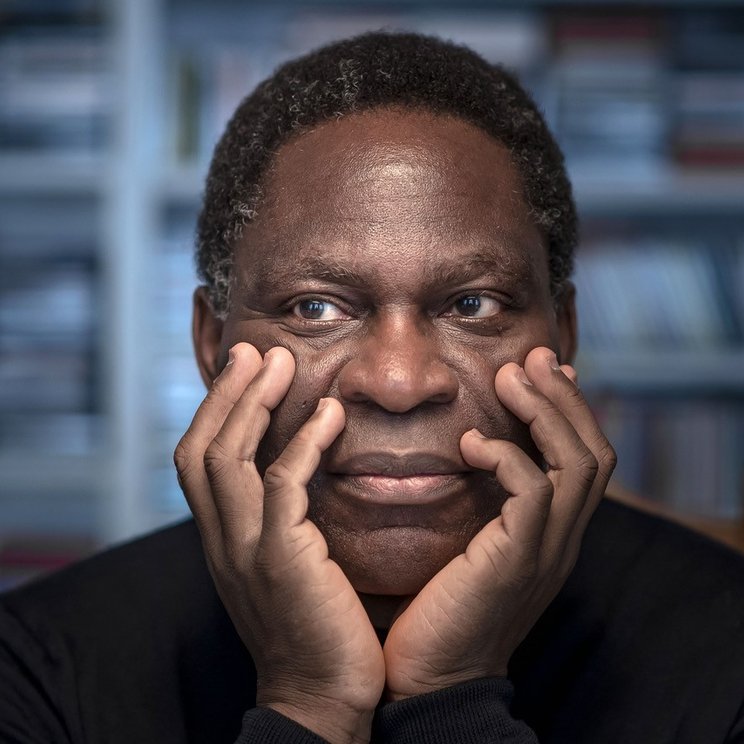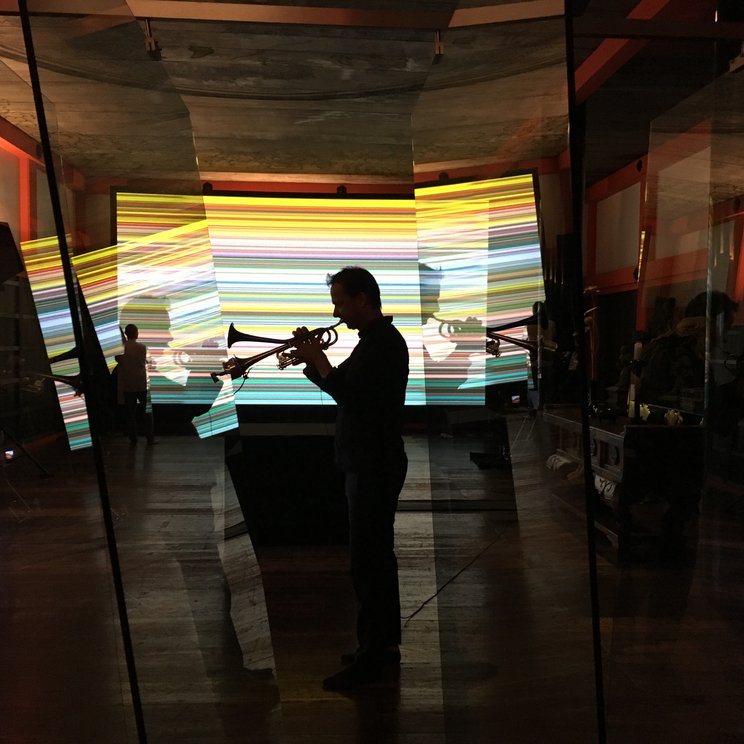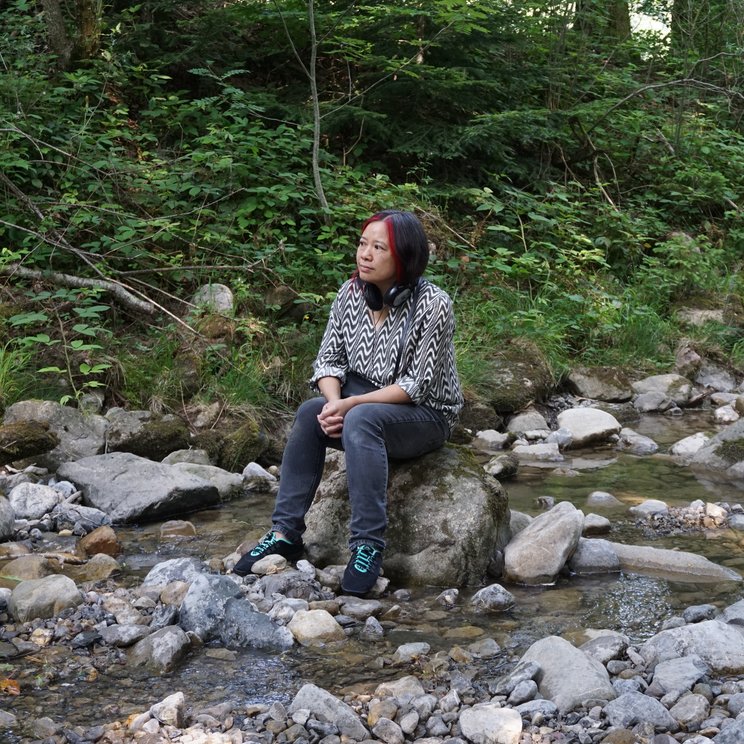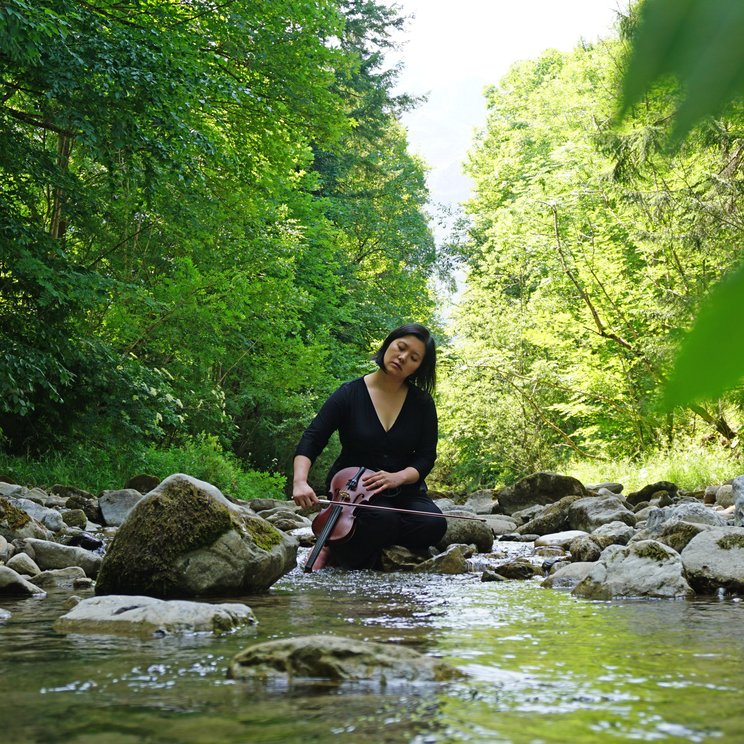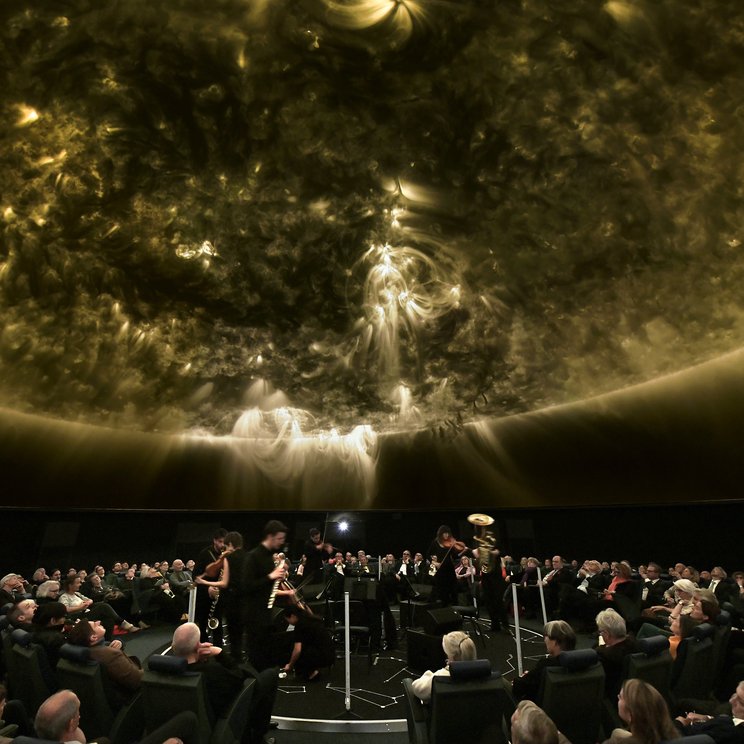We talk to Swedish singer Sofia Jernberg who will perform at the Opening Concert of the third edition of Lucerne Festival Forward. In Switzerland's biggest movie space – the filmtheatre of the Swiss Museum of Transport – she will explore both intimate and overwhelmingly synesthetic music making.
"Video/Opera" — Concert 1
Concert programme
Here you can find the free concert programme for the Concert 1 "Video/Opera".
Werkkommentar
-
Clara Maïda on «Web studies» (2016)
The idea of Web studies occurred to me during a stay in New York. Walking all over the town, I was very greatly impressed by the structure of the Brooklyn Bridge and its system of intertwined cables, which was strangely reminiscent of a cobweb. This reticular architecture and the term “web” immediately reminded me of the more virtual architecture of any network system, one of which, the Internet (the “World Wide Web”), has gradually invaded our daily life over the last thirty years. On a structural level, nanoscience has taught us that living and non-living matter are made of the same constituents. Any system, whether biological, psychic or technological, results from the articulation between minimal units which keep being bound or unbound, driven by microscopic forces. I have always been fascinated by the paradoxical state in which the mobility of a system is equally conditioned by micro-links and micro-ruptures.
In the wake of the complex weaving of threads of my string quartet …, das spinnt… (second part of the series www), the three pieces of Web studies (Web-wake, Web-wave and Web-wane) can be envisaged as a series of declensions of the web, three possible actualizations of the virtual potentialities given by a network, where bifurcations, turnarounds, accumulations or sudden breaches can appear at any point of the path, in an ever-mobile and fleeting time. It is interesting to consider oneself, on the individual as well as on the collective level, at the intersection of the interconnections of a diagram. Each micro-movement in one point generates the movement of the surrounding zones. Our hyper-connected world is one of the manifestations of this characteristic of a system in which each individual action, however trivial it may appear, can have an unexpected impact and induce an intense upheaval that spreads all over the planet, for better or for worse, with a rapidity which was impossible before the advent of the Internet.
The title Web-wake plays on the polysemy of the term “wake” which can indicate a funeral vigil as well as bringing dead people back to life. It also refers to the wake of a ship or to that which follows an event, for instance. Followed by the postposition “up”, it can then mean “to wake up”, but also, more figuratively, “to become aware of something” or “to make someone become aware of something”. Playing on this plurality of the term, the piece spreads out various clearly perceptible sound kinemes which will come back in the three pieces: the pendular (rocking) movements, the elastic descending formulas, and the polystratified piano textures, which alternate between a descending movement and an attempt to rise again, suggest an instability, a loss of balance and, in their wake, a fall and the striving to recover.
In Web-wave, the sound matter is feverish, convulsive. Kaleidoscopic sound objects rearrange the units that compose them in ever-changing constellations. The extreme rapidity of the articulations, the jerky succession of the events, and the brutal torsions that traverse the texture generate a multitude of micro-waves which dismantle the organization and suddenly tear up the musical tissue. The sound density keeps varying, oscillating between clusters of matter and the emergence of tiny and fragile threads which seem to swing in the void. The constant agitation is simultaneously a factor of cohesion and dispersion of the matter.
The last piece, Web-wane, alludes to the decrease, the decline (“wane”). The elements of the sound material recur, but their repetition gradually leads to their liquidation, to a decreasing of their density, and then to their disappearance.
Upheaval, mutation, and hybridization are the three characteristics of this series. They recall our troubled time and our confusion in the face of the disappearance of clear markers. The preparation of the piano and the use of objects which explore all the zones of the instruments give us the feeling of being in the presence of “mutant” instruments, made of strings. An “inter-territory” appears, within which the acoustic identity of the instruments gradually becomes uncertain and converges towards an unprecedented and hybrid sonority, born of the merging of their extended potentialities and the use of electronics. The 3D interactive video proposes a visual manifestation of the sound-ramifying processes in progress.
The three pieces of Web studies are dedicated to all the victims of violence and human madness all over the world.
More information on Clara Maïda and her work can be found here.


